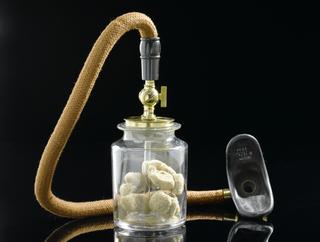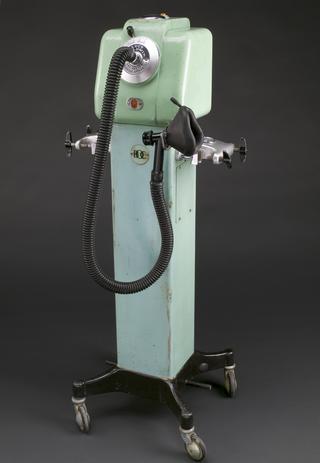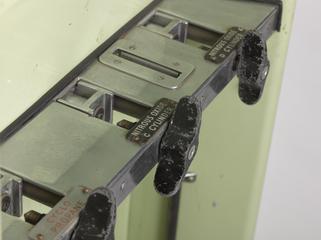
Magill-type endotracheal tube
- Made:
- 1981 in England and United Kingdom

Magill endotracheal tube, cuffed, rubber, by Medishield, England, 1981
An endotracheal tube is inserted into the trachea to keep the airway open during surgery and afterwards, when the patient is waking up from a general anaesthetic, to provide oxygen. The tubes are also used to administer medications.
After the tube has been inserted into the trachea – either through the nose, mouth or by a tracheotomy – the cuff is inflated. The inflated cuff anchors the tube in place and gives an airtight seal so the correct volumes and pressures of oxygen are delivered to the lungs. Because the patient is anaesthetised, he or she cannot rely on the body’s natural reflex to prevent mucus and vomit entering the lungs via the trachea, so the inflated cuff provides a barrier.
This rubber endotracheal tube is named after Ivan Whiteside Magill (1888-1986), an Irish anaesthetist who brought wide-with-angled-end rubber tubes into mainstream use in the 1920s. The tubes could be inserted into the nose or mouth.
Details
- Category:
- Anaesthesiology
- Object Number:
- 1981-1781
- Materials:
- rubber
- Measurements:
-
overall: 12 mm x 204 mm x 100 mm, .02kg
- type:
- endotracheal tube
- credit:
- Skinner, J.




